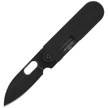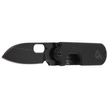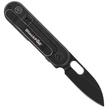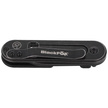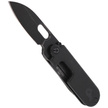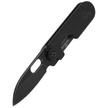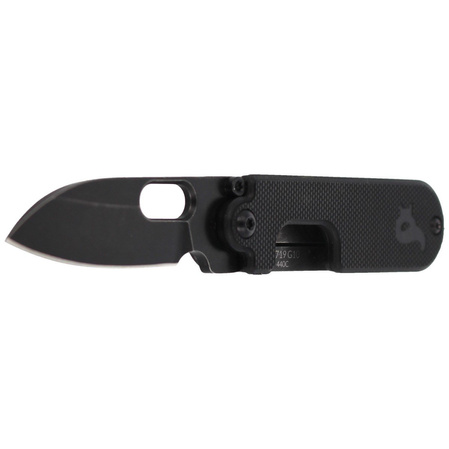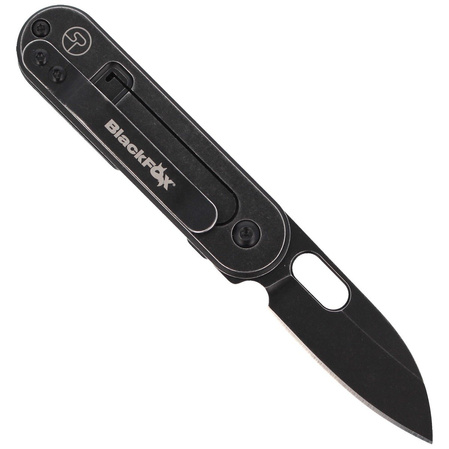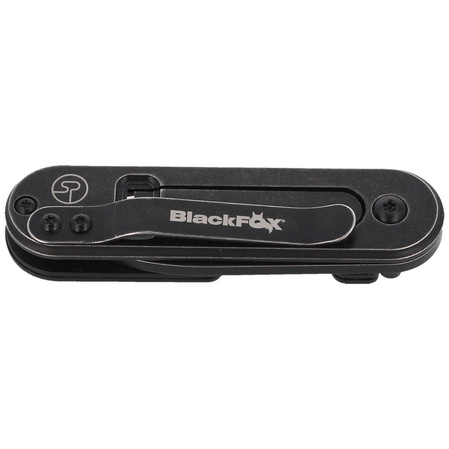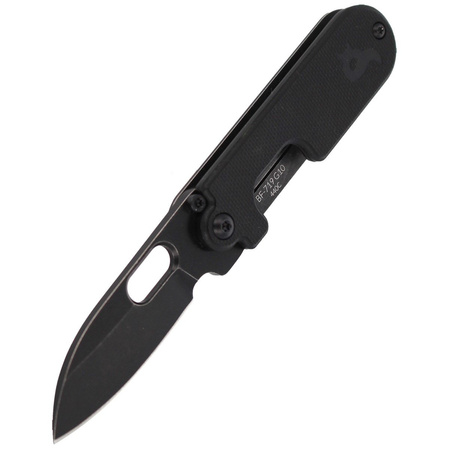BlackFox Bean Gen2 G10 Black Knife by Panchenko (BF-719 G10)
- Bean Gen 2 G10 Black, a compact EDC folder, design by Serge Panchenko. The Ukrainian knifemaker's design combines a quality/price ratio and functionality that is hard to beat. Equipped with Slip-Joint mechanism. Finished with Idroglider Black coating.
Bean Gen2 G10 Black, a compact folder by E.D.C., design by Serge Panchenko. The Ukrainian knifemaker's design combines a value for money and functionality that is hard to beat. Equipped with a Slip-Joint mechanism legal in most countries.
SlipJoint - nonlocking ball detent mechanism used in folders. Force is required to fold the knife. SlipJoint holds the blade in both the folded and unfolded position.
Head - with refined profile similar to Steepfoot (sheep foot). Made of well-sharpened, hardened in the range of 56-59 HRC, durable 440C stainless steel. Plain, smooth blade is flat ground for excellent geometry and strength. Oval cut-out for opening the blade.
Idroglider® Black - the blade is coated with a scratch resistant, matt non-reflective PTFE coating. Ensures long life of the blade and resistance to rust.
Handle - asymmetrical made of stainless steel, which is the base of the non-locking mechanism and G-10 plastic with non-slip Rouge texture for better grip. Open-backed design reduces weight, simplifies cleaning. A cutout in one of the facings guarantees right-handed access to the oval opening for opening the blade. The right-handed metal clip allows the knife to be carried in tip-up position.
Technical data:
Product number: BF-719G10
Type of steel: 440C
Blade hardness: 57-59 HRC
Blade length: 50.0 mm / 1.97"
Blade thickness: 3.0 mm / 0.12"
Overall length: 130.0 mm / 5.12"
Weight: 65.0 g / 2.29 oz
Cutting edge type: Plain
Blade type: Steepfoot
Handle type: G10 Black
Clip: Right, Tip-up
Manufacturer: FOX Cutlery, Italy
Przeczytaj!
This product is intended for use only by adults with knowledge and experience in handling sharp cutting tools. Improper use of the knife can result in serious injuries. The blade is extremely sharp and can easily cut through skin and tissue; therefore, extra caution should always be exercised while cutting, and hands should be kept away from the cutting edge. To prevent the knife from slipping, it is recommended to cut on a stable, non-slip surface and avoid excessive force, which may cause uncontrolled blade movement.
Leaving the knife on the edge of a table, countertop, or in easily accessible places—especially where children are present—poses a significant safety risk. The knife should always be properly secured after use, ideally by placing it on a stable surface or storing it in designated knife blocks, protective sheaths, or magnetic strips. The knife should never be used for tasks it is not designed for, such as opening cans or prying objects, as this can damage the tool and lead to dangerous accidents.
A dull blade increases the risk of injury, as it requires more force and is more likely to slip from the material being cut. Therefore, it is essential to sharpen the knife regularly to maintain optimal sharpness. Additionally, proper cleaning and drying of the knife are necessary to prevent corrosion and bacterial growth. Periodic inspection of the handle and blade is recommended to check for cracks, chips, or looseness. If any damage is detected, the knife should be repaired or replaced immediately.
When using the knife, focus solely on the task at hand—avoid talking on the phone, watching television, or other distractions while cutting. Ensure proper lighting in the workspace for better visibility and control. Please note that some countries or regions have laws restricting the ownership and carrying of knives. Before purchasing or using this knife, verify that its use is legal in your location according to applicable regulations.
Following these safety guidelines will help ensure safe and effective knife use, minimizing the risk of accidents and extending the lifespan of the tool.

